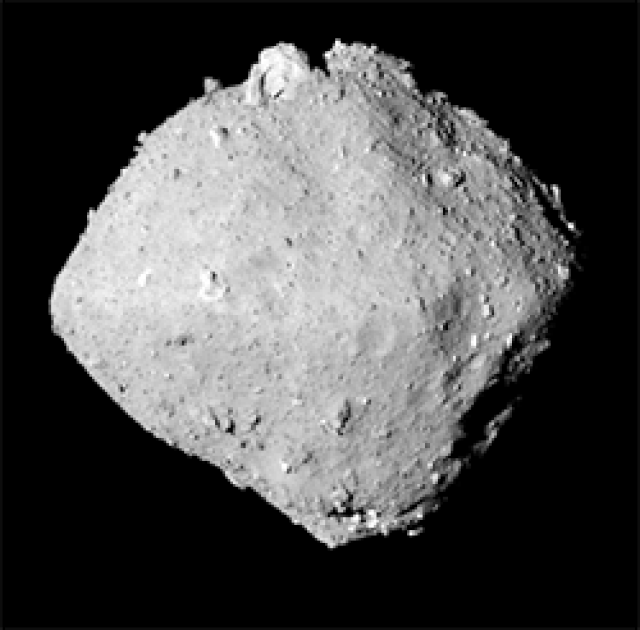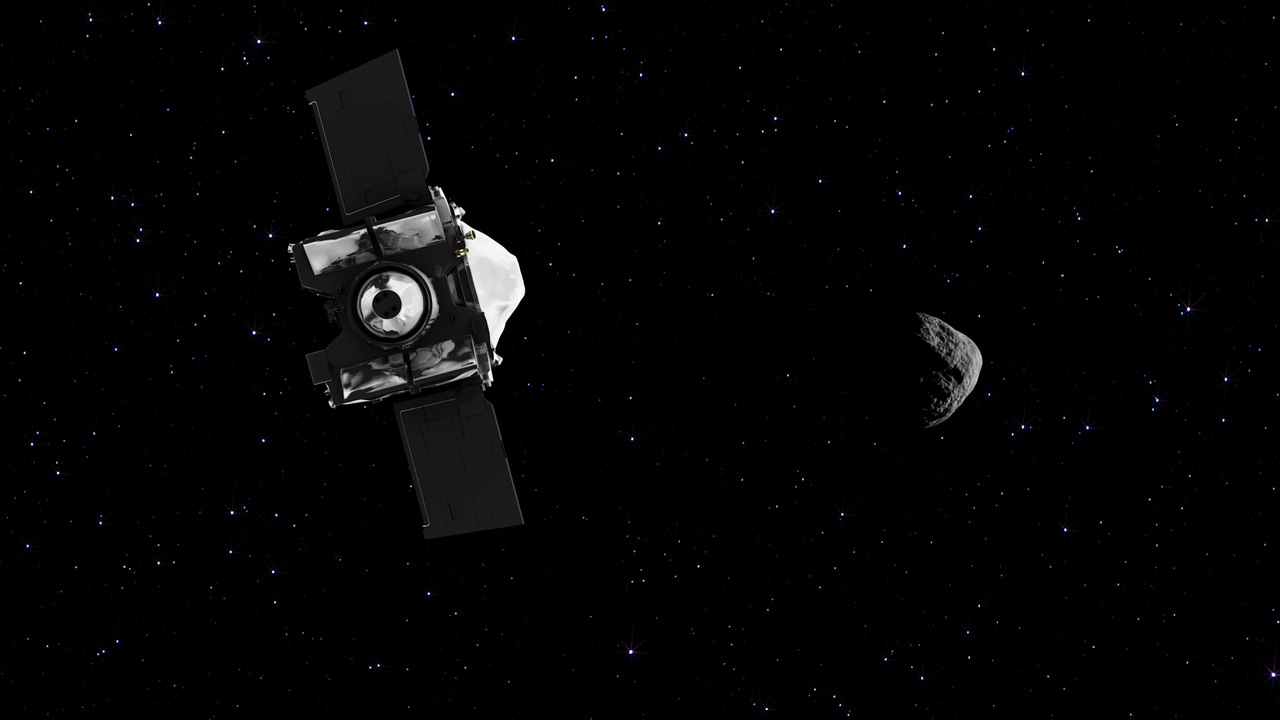Featuring image: Artists impression of Hayabusa2 approaching Ryugu. Image credit: NASA/JPL, Public Domain (CC0)
Paper: Uracil in the carbonaceous asteroid (162173) Ryugu
Authors: Y. Oba, T. Koga, Y. Takano, N. O. Ogawa, N. Ohkouchi, K. Sasaki, H. Sato, D. P. Glavin, J. P. Dworkin, H. Naraoka, S. Tachibana, H. Yurimoto, T. Nakamura, T. Noguchi, R. Okazaki, H. Yabuta, K. Sakamoto, T. Yada, M. Nishimura, A. Nakato, A. Miyazaki, K. Yogata, M. Abe, T. Okada, T. Usui, M. Yoshikawa, T. Saiki, S. Tanaka, F. Terui, S. Nakazawa, S. Watanabe, Y. Tsuda and Hayabusa2-initial-analysis SOM team
Bringing a space probe to an asteroid is hard. Bringing back a piece of that asteroid to Earth is even harder. Nevertheless, Hayabusa2 successfully brought back samples from the asteroid Ryugu and gives us valuable insight on the abundance of biomolecules in our solar system.
What the Japanese space agency JAXA accomplished is extraordinary. After the successful sample return mission of Hayabusa from asteroid 25143 Itokawa in 2010, the successor mission again was able to bring us back precious, pristine asteroid material, including gas samples. In contrast to Itokawa, the new target Ryugu represents a much more pristine asteroid, chemically connected to a class of meteorites called carbonaceous chondrites. Researchers already detected the very building blocks of life, like amino acids and nucleobases, in these meteorites. The careful analysis of the Hayabusa2 samples revealed that one of the nucleobases, uracil, is also present in Ryugu.
Uracil is a nucleobase that is used in RNA. In contrast to DNA, RNA does not encode our genetic heritage, but helps our body to transport information from the DNA to build and replicate proteins. Because of its catalytic properties, RNA may have been used to store genetic information in very early life or the biochemical systems, from which life emerged.
How are meteorites and asteroids related? Asteroids are generally thought to be the mother bodies from which most of the meteorites originate. Collisions or orbital interactions shattered some asteroids to smaller meteorites. The heat of the fracturing processes let to the lost of most of the volatile components of the asteroid. Hence, meteorites are composed mostly of minerals, glass and metal and not ice. You can think of asteroids as the icy, unprocessed precursors of meteorites. mostly undisturbed by weathering processes. And this is why the analysis of asteroids is so important for our understanding of the history of our solar system. They help us to understand what happened at the very beginning and what later.

A sample return mission is not easy. The maneuvering ask for a lot of engineering know-how and a careful analysis of the asteroids orbital movements. Moreover, one needs to make sure, that there is no way of terrestrial contamination when the sample is brought back to Earth. JAXA employed a careful protocol, that ensured that the sample never came in contact with the Earth’s atmosphere. However, the scientists analysed the samples also for biomolecules, that are very common on Earth and compared the abundance of the compounds they found with the relative abundances of these molecules in terrestrial biological systems. All evidence suggests that the biomolecules detected in the Ryugu samples are indeed of extraterrestrial origin.

These are exiting news. If uracil is present on icy objects like Ryugu, chances are high, that also other, larger icy objects like the moons of Saturn or Jupiter could contain them. From their formation or by collision with asteroids. Some of these moons, for example Titan or Europa, could have liquid oceans under their ice crusts. If some of the molecules that sparked life on Earth are also abundant on these objects, the existence of very simple life in other places in our solar system cannot be ruled out.
License:
‘Biomolecules on icy worlds’ by Max Winkler is licensed under a Creative Commons Attribution-ShareAlik

